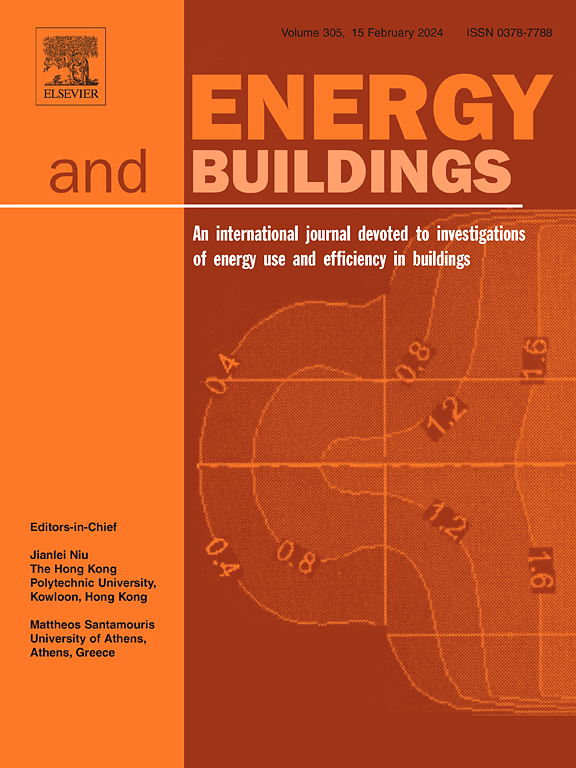Transient thermal comfort during summer in air-conditioned indoor and naturally ventilated transitional spaces − A field study in Zhengzhou, China
IF 6.6
2区 工程技术
Q1 CONSTRUCTION & BUILDING TECHNOLOGY
引用次数: 0
Abstract
Naturally ventilated transitional spaces connect air-conditioned indoors with the natural outdoor environment, resulting in continuous temperature steps for individuals entering and exiting buildings. However, the relationship between transient thermal comfort characteristics and temperature step changes in the thermal environment is not well understood, and currently, there is no generally recommended range for transient thermal comfort. To address this gap, a field experiment was conducted to measure the thermal comfort of 16 healthy students as they moved separately between air-conditioned indoors, naturally ventilated transitional spaces, and outdoor spaces. The thermal environment parameters were recorded and thermal comfort questionnaires were collected. This study demonstrates that ASHRAE 55-2023 and the relevant Chinese standards cannot be directly applied to assess the range of comfort levels in indoor and transitional spaces in cold regions during summer. People tend to adapt to a much wider range of indoor environmental conditions. The comfort zones of indoor and transitional spaces in cold regions in summer are −2.5 < TSV (Thermal sensation vote) < 1.3 and −0.2 < TSV < 0.8, respectively. The corresponding temperature ranges are 11.6–32.9 °C and 17.1–24.5 °C respectively. The thermal unacceptability percentages, corresponding to the indoor thermal comfort zone, were as high as 26 % on the cold side and only 16 % on the hot side. The thermal unacceptability percentages corresponding to the two sides of the thermal comfort zone in the transitional space were 23 % and 33 %. This study provides insights for the development of future building regulations and retrofitting strategies in cold regions.
求助全文
约1分钟内获得全文
求助全文
来源期刊

Energy and Buildings
工程技术-工程:土木
CiteScore
12.70
自引率
11.90%
发文量
863
审稿时长
38 days
期刊介绍:
An international journal devoted to investigations of energy use and efficiency in buildings
Energy and Buildings is an international journal publishing articles with explicit links to energy use in buildings. The aim is to present new research results, and new proven practice aimed at reducing the energy needs of a building and improving indoor environment quality.
 求助内容:
求助内容: 应助结果提醒方式:
应助结果提醒方式:


